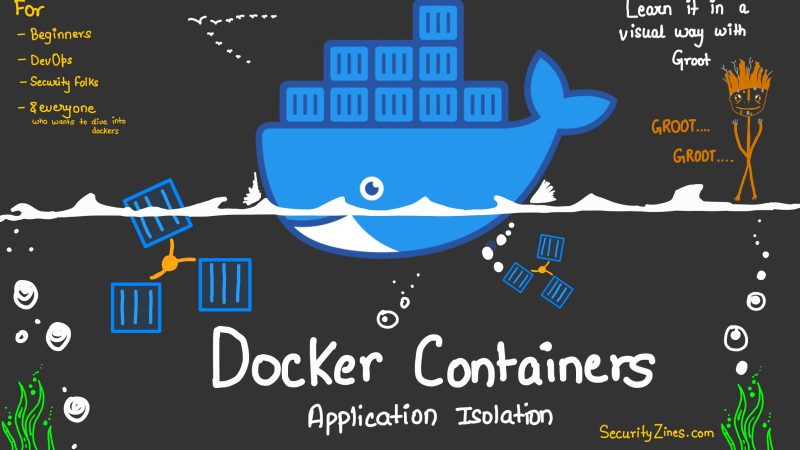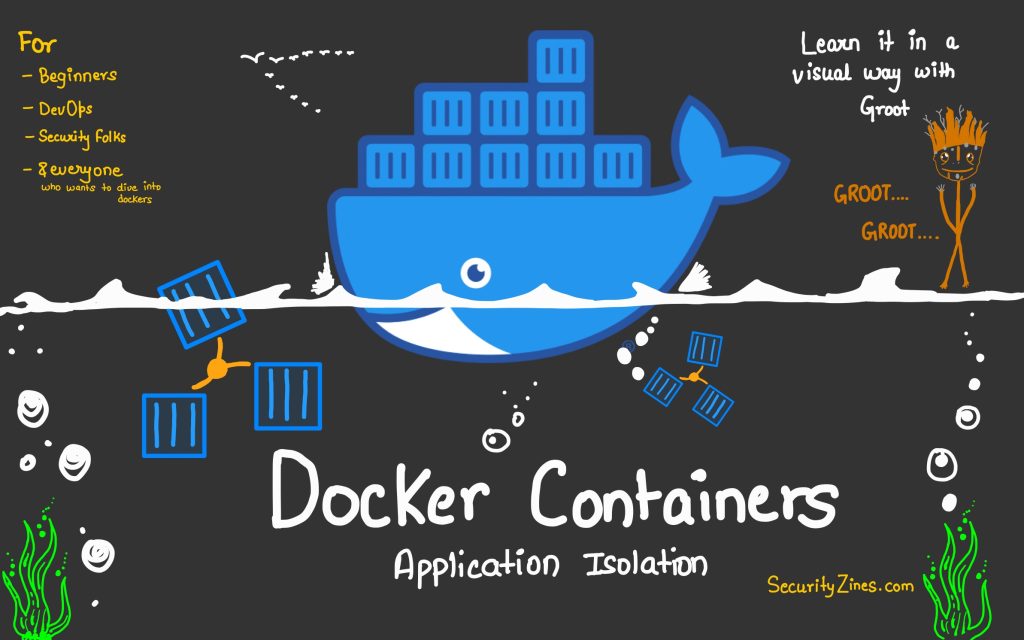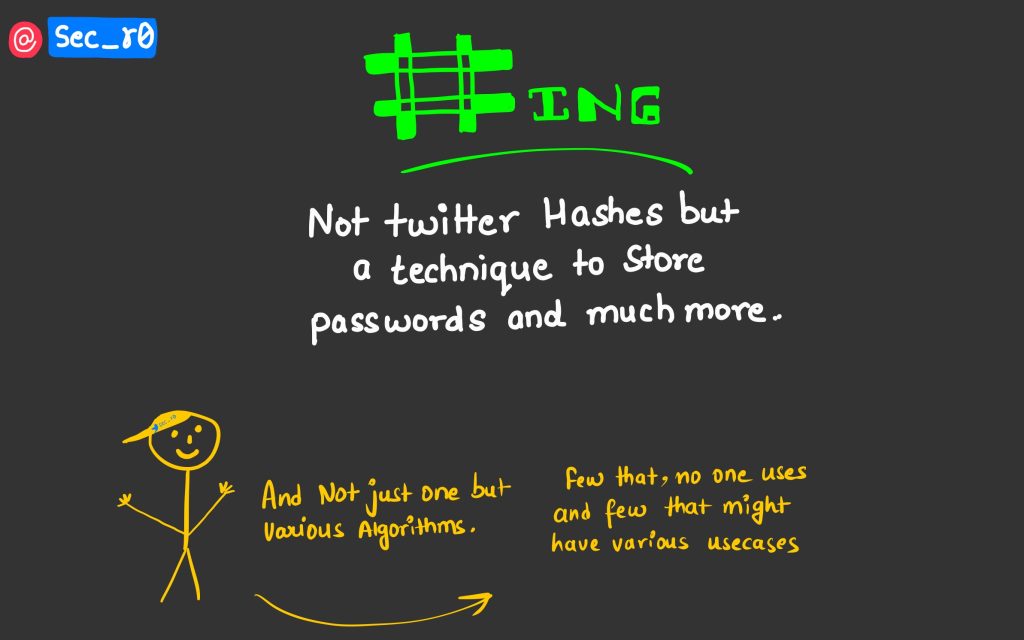What will you find in the hack forum?
Hacking Tools
Hundreds of thousands of hacking and computer security tools. Remote administration, crypter, thief, spreader, botnet and much more.
Courses
You can find courses, guides, video tutorials, manuals, everything related to computer security.
Articles

Introduction
Structured Query Language injection (SQLi) attacks have been a long-standing threat to web security. Despite the wealth of knowledge and resources available to combat these attacks, SQLi remains a popular and effective method for cybercriminals to exploit vulnerable web applications. In this article, we will delve deep into the world of SQLi attacks, examining their history, how they work, and the most common mitigation techniques to help you safeguard your applications.
A Brief History of SQLi Attacks
SQLi attacks first came to prominence in the late 1990s as web developers began to adopt SQL databases as the backend for their web applications. The first recorded SQLi attack occurred in 1998 when a hacker exploited a vulnerability in Microsoft’s Internet Information Services (IIS) server. Since then, SQLi attacks have grown in prevalence and sophistication, with numerous high-profile attacks such as the 2008 Heartland Payment Systems breach, which resulted in the compromise of more than 130 million credit card numbers.
How SQLi Attacks Work
SQLi attacks occur when an attacker exploits a vulnerability in a web application’s database layer, allowing them to manipulate SQL queries to perform unauthorized actions. This can include data exfiltration, modification, or even complete control over the database. SQLi attacks can be broadly classified into three categories: In-band, Out-of-band, and Inferential.
- In-band SQLi Attacks
In-band SQLi attacks are the most common type of SQLi attack, where the attacker uses the same communication channel to launch the attack and gather the results. In-band attacks can be further categorized into two subtypes: error-based and union-based.
- Error-based SQLi: The attacker exploits poorly handled error messages to gain information about the database structure, which can then be used to craft more targeted queries. Error-based SQLi is often the starting point for more advanced attacks.
- Union-based SQLi: The attacker manipulates SQL queries using the UNION operator to join the results of two or more SELECT statements, thereby extracting data from multiple tables. This technique allows attackers to retrieve sensitive data that they wouldn’t otherwise have access to.
- Out-of-band SQLi Attacks
Out-of-band SQLi attacks rely on alternative communication channels to exfiltrate data. These attacks are less common, mainly due to the additional setup and infrastructure required. However, they can be particularly effective in situations where the attacker’s ability to use the same channel for input and output is limited or blocked.
- Inferential SQLi Attacks
Also known as blind SQLi attacks, inferential attacks involve the attacker sending payloads to the server and observing the server’s response or behavior to deduce information about the database. These attacks can be significantly slower than other types but can be effective when error messages and other explicit information are unavailable.
Mitigation Techniques
There are several best practices and mitigation techniques that can help protect your web applications from SQLi attacks. Here, we’ll discuss the most common and effective methods.
- Input Validation
Input validation is the process of ensuring that the data provided by users is in the expected format and within acceptable limits. By implementing strict input validation rules, you can prevent the inclusion of malicious SQL code in user inputs. Use a combination of client-side and server-side validation to create multiple layers of security.
- Prepared Statements and Parameterized Queries
Prepared statements, also known as parameterized queries, separate SQL query logic from the data being provided. This approach effectively neutralizes the threat of SQLi attacks by treating user input as data, rather than as a part of the query itself. Most modern programming languages and database management systems (DBMS) support prepared statements, making them a reliable and efficient method of protection against SQLi attacks.
- Stored Procedures
Stored procedures are precompiled SQL statements that are stored within the database and can be called by an application. Like prepared statements, stored procedures can help prevent SQLi attacks by separating the query logic from the user input. However, it’s essential to ensure that the stored procedures themselves do not contain any vulnerable code.
- Escaping User Input
Escaping user input involves adding escape characters to user-provided data before including it in an SQL query. This process effectively neutralizes any potentially harmful characters that might be used to craft an SQLi attack. While escaping user input can be an effective method to prevent SQLi, it is generally considered less secure than using prepared statements or stored procedures.
- Least Privilege Principle
The principle of least privilege dictates that users and applications should have the minimum level of access required to perform their tasks. By limiting the privileges of your application’s database user account, you can minimize the potential impact of an SQLi attack. For example, if your application only needs to read data from a specific table, ensure that the associated user account does not have permission to modify or delete data from that table or any other table.
- Regularly Update and Patch Software
Ensure that all software components, including the operating system, web server, DBMS, and any frameworks or libraries, are regularly updated and patched. This practice helps close any known security vulnerabilities and can protect against SQLi attacks that exploit outdated software.
- Web Application Firewall (WAF)
A Web Application Firewall (WAF) is a security solution that filters, monitors, and blocks HTTP traffic to and from a web application. By implementing a WAF with specific rules to block SQLi attempts, you can add an additional layer of security to your web applications.
- Security Awareness and Training
While implementing technical security measures is crucial, it’s equally important to ensure that your developers and administrators are well-trained in secure coding practices and understand the risks and methods associated with SQLi attacks. Regular security training can help your team stay up-to-date on the latest threats and mitigation techniques.
Conclusion
SQLi attacks remain a significant threat to web applications, but with a combination of best practices, secure coding techniques, and ongoing security awareness, you can significantly reduce the risk of a successful attack. By understanding the different types of SQLi attacks and implementing the mitigation techniques discussed in this article, you can help safeguard your applications and protect your users’ valuable data from exploitation.

iSQL Attacks: An In-Depth Look at the Evolving Cybersecurity Threat
Introduction
As technology evolves, so do the threats that accompany it. One such emerging cybersecurity threat is iSQL attacks, a relatively new term in the world of computer security. iSQL stands for “intelligent SQL,” referring to the sophisticated nature of these attacks. As opposed to traditional SQL injection attacks that exploit vulnerabilities in web applications, iSQL attacks incorporate advanced techniques to target systems more efficiently and evade detection. This article provides an in-depth look at iSQL attacks, their evolution, the risks they pose, and the strategies businesses can employ to protect themselves against this threat.
The Evolution of SQL Injection Attacks
To understand iSQL attacks, it’s essential to examine the history of SQL injection attacks. SQL injection is a technique that exploits vulnerabilities in a web application’s database layer, allowing an attacker to execute arbitrary SQL commands on the underlying database. This can lead to unauthorized access, data theft, or even the complete compromise of the targeted system.
Traditionally, SQL injection attacks relied on manual exploitation and a deep understanding of the target application’s database structure. However, over time, attackers have developed automated tools that can quickly identify and exploit vulnerable applications. As security measures have improved, so too have the capabilities of SQL injection attack tools.
iSQL Attacks: A New Generation of Threat
iSQL attacks take SQL injection techniques to the next level by incorporating artificial intelligence and machine learning algorithms. These advanced methods enable the attacks to be more targeted, efficient, and stealthy, making them harder to detect and mitigate. Some of the unique features of iSQL attacks include:
- Advanced Reconnaissance: iSQL attacks often start with an extensive reconnaissance phase. During this stage, the attacker gathers information about the target system, including database structure, table names, and column types. This information is then used to craft highly targeted SQL injection payloads that have a higher likelihood of success.
- Intelligent Payload Generation: Traditional SQL injection attacks often rely on a trial-and-error approach, attempting numerous payloads until one successfully exploits the vulnerability. iSQL attacks, on the other hand, employ machine learning algorithms to generate more effective payloads, reducing the number of attempts and increasing the chances of a successful attack.
- Evasion Techniques: iSQL attacks can employ a range of evasion techniques to avoid detection by security systems. For example, they may use obfuscation to disguise SQL injection payloads or employ timing-based attacks that execute over a more extended period to avoid triggering alarms.
- Self-Adaptation: iSQL attacks can adapt to the target system’s defenses in real-time. By analyzing the responses from the target system, an iSQL attack can modify its payload or approach to bypass security measures and increase the likelihood of success.
The Risks of iSQL Attacks
iSQL attacks pose several risks to businesses and organizations, including:
- Data Theft: As with traditional SQL injection attacks, iSQL attacks can lead to unauthorized access to sensitive data, such as customer information, intellectual property, or financial records.
- Data Manipulation: Attackers may use iSQL attacks to alter data within the target system, leading to potential financial losses, reputational damage, or regulatory penalties.
- System Compromise: In some cases, iSQL attacks can result in the complete compromise of the targeted system, giving the attacker control over the system’s resources and the ability to execute further attacks.
- Increased Dwell Time: The stealthy nature of iSQL attacks means that they may remain undetected for more extended periods, increasing the potential damage and giving attackers more time to exfiltrate or manipulate data.
Mitigating the Threat of iSQL Attacks
To protect against iSQL attacks, businesses and organizations need to adopt a multi-layered approach to cybersecurity that includes:
- Vulnerability Management: Regularly scan web applications for known vulnerabilities, including those that could be exploited by iSQL attacks. Patch and update systems promptly to minimize the risk of exploitation.
- Secure Coding Practices: Developers should adhere to secure coding practices, such as input validation and parameterized queries, to reduce the likelihood of introducing vulnerabilities that can be exploited by iSQL attacks.
- Web Application Firewalls (WAF): Implement a web application firewall to monitor and filter traffic to and from the application. A WAF can detect and block iSQL attack attempts, preventing them from reaching the target system.
- Intrusion Detection and Prevention Systems (IDPS): Deploy an intrusion detection and prevention system to monitor network traffic for signs of iSQL attacks or other malicious activities. An IDPS can help detect and block iSQL attacks in real-time, minimizing potential damage.
- Security Awareness Training: Educate employees about the risks of iSQL attacks and other cybersecurity threats. Ensure that all staff members, particularly those with access to sensitive data, are aware of the signs of a potential iSQL attack and the appropriate steps to take if they suspect an attack is in progress.
- Regular Security Audits: Conduct regular security audits to identify potential weaknesses in the organization’s security posture. These audits should include a thorough assessment of web applications, databases, and other critical systems that may be targeted by iSQL attacks.
- Incident Response Planning: Develop and maintain a robust incident response plan to ensure that the organization can respond quickly and effectively to an iSQL attack or other cybersecurity incidents. This plan should include procedures for detecting, containing, and mitigating the attack, as well as steps for restoring affected systems and minimizing the impact on business operations.
Conclusion
iSQL attacks represent a significant and evolving threat to businesses and organizations. By incorporating advanced techniques such as artificial intelligence and machine learning, these attacks can target systems more efficiently and evade traditional security measures. To protect against iSQL attacks, organizations must adopt a multi-layered approach to cybersecurity, combining technical safeguards, secure development practices, and ongoing security awareness training. By staying informed about the latest threats and implementing comprehensive security strategies, businesses can significantly reduce the risk of falling victim to iSQL attacks and other emerging cybersecurity challenges.

The Importance of Vulnerability Management and Patching for a Strong Security Posture
Learn why regular vulnerability assessments and timely patching are essential to maintaining a strong security posture. Get tips on managing software and hardware vulnerabilities effectively.
dEEpEst
In today’s world, where cyber threats are constantly evolving, it is crucial for organizations to maintain a strong security posture. One of the essential components of a robust security posture is vulnerability management and patching. A vulnerability assessment is a critical first step to identifying potential weaknesses in your network and systems, while timely patching can help mitigate the risk of a potential attack. In this article, we will discuss the importance of regular vulnerability assessments and timely patching to maintain a strong security posture. We will also share tips on how to effectively manage software and hardware vulnerabilities in an organization.
Vulnerability assessments are a crucial part of a robust security posture. These assessments help identify potential weaknesses in an organization’s network and systems. Vulnerability assessments can be conducted in various ways, such as scanning your network and systems for vulnerabilities or using specialized tools to detect vulnerabilities. Once vulnerabilities are identified, organizations can prioritize them based on severity and potential impact.
Timely patching is another critical aspect of vulnerability management. A patch is a software update designed to fix a vulnerability or security flaw. Timely patching can help mitigate the risk of an attack by reducing the window of opportunity for attackers to exploit vulnerabilities. Patches can be applied to various types of software, including operating systems, web browsers, and third-party applications.
To effectively manage software and hardware vulnerabilities, organizations should consider the following tips:
- Prioritize vulnerabilities: Prioritizing vulnerabilities based on their severity and potential impact is crucial. This helps organizations to focus on the most critical vulnerabilities and reduce the risk of a potential attack.
- Implement a patch management process: Implementing a patch management process can help ensure that patches are applied in a timely and consistent manner. This process should include testing patches in a controlled environment before deploying them to production systems.
- Educate employees: Educating employees on the importance of vulnerability management and patching can help create a culture of security awareness within the organization. Employees should be trained on how to identify and report vulnerabilities, as well as how to apply patches.
- Use automated tools: Automated tools can help streamline the vulnerability management process. These tools can scan networks and systems for vulnerabilities, prioritize them based on severity, and apply patches automatically.
- Monitor for new vulnerabilities: Monitoring for new vulnerabilities and threats is crucial. Organizations should stay up to date with the latest security threats and vulnerabilities and adjust their vulnerability management processes accordingly.
Vulnerability management and patching are crucial aspects of maintaining a strong security posture in today’s constantly evolving threat landscape. With the increasing frequency and sophistication of cyber attacks, organizations must be vigilant and proactive in identifying and addressing potential vulnerabilities in their systems and networks.
Regular vulnerability assessments are essential for identifying potential weaknesses in an organization’s infrastructure. These assessments can be performed through various methods, such as manual testing or automated vulnerability scanning tools. Once vulnerabilities are identified, they should be prioritized based on their severity and potential impact to the organization’s operations and data security.
Timely patching is equally important in mitigating the risk of a potential attack. Cyber criminals are always searching for new vulnerabilities to exploit, and it’s crucial for organizations to keep their systems up-to-date with the latest security patches. This can include updates for operating systems, web browsers, third-party software, and even hardware devices. A comprehensive patch management process can help ensure that patches are tested, approved, and deployed in a controlled and timely manner.
To effectively manage software and hardware vulnerabilities, organizations should also consider implementing security awareness training programs for their employees. Employees can be trained on how to identify and report potential vulnerabilities, as well as the importance of keeping their systems up-to-date with the latest patches.
Automated tools can also help streamline the vulnerability management process, by automating vulnerability scanning, patch management, and reporting. These tools can be configured to scan for vulnerabilities on a regular basis and generate reports for IT teams to review and prioritize.
In conclusion, vulnerability management and patching are crucial components of a robust security posture. Regular vulnerability assessments and timely patching can help mitigate the risk of a potential attack. By following the tips outlined in this article, organizations can effectively manage software and hardware vulnerabilities and maintain a strong security posture.

Web 3.0: Uncovering the Semantic and Decentralized Internet
Dive into the exciting world of Web 3.0, featuring technologies such as blockchain, artificial intelligence, and the semantic web, promising to revolutionize the way we interact online.
dEEpEst
What is WEB 3.0?
The Web 3.0, also known as the Semantic Web, is a term used to describe the evolution of the World Wide Web towards a more intelligent, decentralized, and connected web. Web 3.0 aims to improve the way users interact with online information and how machines process and understand this information to provide more meaningful and personalized experiences to users.
Web 3.0 is based on the following key features and technologies:
- Semantics: Web 3.0 uses metadata and ontologies to enhance machine understanding of content and context of information. This allows for more accurate and relevant search and retrieval, as well as the ability to make inferences and reasonings based on interconnected data.
- Artificial Intelligence: Web 3.0 leverages artificial intelligence and machine learning to create systems that can process information more effectively, offering more accurate and personalized recommendations and results.
- Decentralization: Web 3.0 seeks to decentralize the web, moving away from centralized models of control and data ownership. Blockchain technologies and peer-to-peer networks are foundational to this approach, allowing for greater security, privacy, and control over information and online transactions.
- Interoperability and open standards: Web 3.0 promotes the use of open standards and interoperability between systems and applications. This allows data to be shared and used more fluidly between different platforms and services.
- Cloud computing and Edge computing: Web 3.0 also leverages cloud computing and edge computing to distribute and process data more efficiently, allowing for faster and more scalable online experiences.
In summary, Web 3.0 is a vision of a more intelligent, decentralized, and connected web that seeks to improve the way users interact with information and how machines process and understand this information to provide more personalized and meaningful experiences.
How can I access WEB 3.0?
As the Web 3.0 continues to evolve, new technologies and approaches are being developed and integrated to further enhance our online experiences. Some additional aspects of the Web 3.0 include:
- Virtual and Augmented Reality: Web 3.0 embraces immersive technologies like virtual reality (VR) and augmented reality (AR) to create more engaging and interactive online experiences. This can range from virtual environments for socializing and gaming to AR applications for education and commerce.
- Internet of Things (IoT): The Internet of Things is the concept of connecting everyday devices and objects to the internet, allowing them to send and receive data. Web 3.0 integrates IoT devices into the connected web, enabling greater automation and more seamless interactions between devices, systems, and users.
- Personal Data Ownership and Privacy: Web 3.0 places a strong emphasis on user control over personal data and privacy. Decentralized technologies and advanced encryption methods aim to give users more control over their data and protect their information from unauthorized access and misuse.
- Adaptive User Interfaces and Personalization: Web 3.0 focuses on creating adaptive user interfaces that can adjust to individual user needs and preferences. This can include personalized content recommendations, customizable layouts, and intelligent systems that learn and adapt to user behavior over time.
- Collaborative and Social Networking: Web 3.0 facilitates more collaborative and social experiences online, enabling users to create, share, and interact with content and other users in new and meaningful ways. This can include decentralized social networks, content creation platforms, and other collaborative tools that empower users to contribute and participate in the digital ecosystem.
As the Web 3.0 continues to develop and mature, we can expect to see a greater convergence of these technologies and concepts, leading to a more intelligent, decentralized, and connected web that transforms the way we interact with information and each other online.

Hacking in the Modern World: Understanding the Threats and Protecting Your Systems
In today’s digital world, hacking is a constant threat to businesses and individuals. Learn about the latest hacking techniques and how to protect yourself in this comprehensive guide.
dEEpEst
As technology continues to advance, so do the threats posed by hackers. From stealing personal data to disrupting entire systems, hacking has become a prevalent issue that affects businesses and individuals alike. In this comprehensive guide, we’ll explore the world of hacking, the latest techniques used by cybercriminals, and how to protect yourself and your systems.
Understanding Hacking
Hacking is the act of gaining unauthorized access to a computer system or network. It can be done for a variety of reasons, such as stealing personal information, financial gain, or simply for the thrill of it. Hackers use a range of tools and techniques to gain access to systems, including phishing emails, malware, and social engineering.
Types of Hacking
There are various types of hacking, each with its own set of goals and techniques. Here are some of the most common types of hacking:
- Malware: Malware is software designed to harm or gain unauthorized access to a computer system. This includes viruses, worms, and Trojan horses.
- Phishing: Phishing is a technique used to trick people into giving away sensitive information, such as usernames and passwords. This is often done through email or social media messages.
- Social Engineering: Social engineering involves using psychological manipulation to trick people into giving away sensitive information or performing actions that benefit the hacker.
- Denial of Service (DoS) attacks: DoS attacks are designed to overload a system or network, causing it to crash and become inaccessible.
- Man-in-the-Middle (MitM) attacks: MitM attacks involve intercepting communications between two parties to eavesdrop on their conversations or steal information.
Protecting Against Hacking
With the right precautions, you can protect yourself and your systems against hacking. Here are some tips to keep in mind:
- Use Strong Passwords: Choose passwords that are difficult to guess and use different passwords for each account.
- Keep Software Updated: Keep all software, including operating systems and applications, updated with the latest security patches and upgrades.
- Use Antivirus Software: Install reputable antivirus software and keep it updated to protect against malware.
- Be Cautious with Email: Be wary of unsolicited emails and don’t click on links or download attachments unless you’re sure they’re safe.
- Back Up Your Data: Regularly back up your important data to prevent loss in the event of a cyber attack.
The Future of Hacking
As technology continues to advance, so too will the techniques used by hackers. In the future, we can expect to see more sophisticated attacks that are harder to detect and defend against. This means it’s more important than ever to stay vigilant and take steps to protect yourself and your systems.
Conclusion
Hacking is a serious threat that affects businesses and individuals around the world. By understanding the different types of hacking and taking steps to protect yourself, you can reduce your risk of becoming a victim. Remember to use strong passwords, keep your software updated, and be cautious with email. With these precautions in place, you can stay one step ahead of the hackers and keep your systems secure.

Network Auditing for Large Companies: Essential Steps for a Pentester to Uncover Vulnerabilities and Prevent Hacking
This article provides a comprehensive guide on how to audit the network of a large company, highlighting essential steps for a pentester. The article covers the key considerations and best practices for conducting a network audit to identify vulnerabilities and potential entry points for hackers.
dEEpEst
Introduction
Network auditing is a critical process for any organization, especially for large companies. Network auditing refers to a comprehensive review of the organization’s IT infrastructure, which includes network devices, servers, workstations, applications, and other technology assets. The primary goal of network auditing is to identify any vulnerabilities or entry points that hackers can exploit to gain unauthorized access to the organization’s data and systems.
As a pentester, your job is to simulate real-world attacks to identify security gaps in the organization’s IT infrastructure. In this article, we’ll provide a step-by-step guide on how to audit the network of a large company, highlighting the essential steps you need to follow to identify vulnerabilities and potential entry points for hackers.
Step 1: Planning and Scoping
The first step in conducting a network audit is planning and scoping. This step involves defining the scope of the audit, determining the goals and objectives of the audit, and identifying the resources and tools required to perform the audit.
To start, you need to identify the scope of the audit, which can include the network devices, servers, workstations, applications, and other technology assets that you’ll be auditing. You should also define the objectives of the audit, which could include identifying vulnerabilities and entry points, assessing the effectiveness of existing security controls, or testing the organization’s incident response plan.
Next, you need to determine the resources and tools required to perform the audit. You’ll need to identify the team members who will be involved in the audit, such as network engineers, security analysts, and system administrators. You’ll also need to determine the tools and software required to perform the audit, such as vulnerability scanners, network mapping tools, and penetration testing tools.
Step 2: Information Gathering
The second step in conducting a network audit is information gathering. This step involves collecting information about the organization’s IT infrastructure, such as network devices, servers, workstations, and applications. This information can help you understand the organization’s network topology, identify potential vulnerabilities and entry points, and assess the effectiveness of existing security controls.
To gather information, you can use a variety of techniques, such as port scanning, network mapping, and social engineering. Port scanning involves scanning the organization’s network devices to identify open ports and services running on those ports. Network mapping involves creating a map of the organization’s network devices and their relationships. Social engineering involves using deception to obtain information from employees or other insiders.
Step 3: Vulnerability Assessment
The third step in conducting a network audit is vulnerability assessment. This step involves using vulnerability scanners and other tools to identify vulnerabilities in the organization’s IT infrastructure. Vulnerabilities can include software bugs, configuration errors, and outdated software or hardware.
To conduct a vulnerability assessment, you can use a variety of tools, such as Nessus, OpenVAS, and Qualys. These tools can scan the organization’s network devices and applications to identify vulnerabilities and provide recommendations for remediation.
Step 4: Penetration Testing
The fourth step in conducting a network audit is penetration testing. This step involves simulating real-world attacks to identify security gaps in the organization’s IT infrastructure. Penetration testing can help you identify potential entry points for hackers and assess the effectiveness of existing security controls.
To conduct a penetration test, you can use a variety of tools, such as Metasploit, Nmap, and Burp Suite. These tools can help you identify vulnerabilities and exploit them to gain unauthorized access to the organization’s systems and data. It’s essential to conduct penetration testing carefully and with the organization’s consent to avoid any legal or ethical issues.
Step 5: Reporting and Remediation
The fifth and final step in conducting a network audit is reporting and remediation. This step involves documenting your findings and recommendations and presenting them to the organization’s management team. Your report should include a summary of the vulnerabilities and potential entry points you identified, the impact they could have on the organization, and recommendations for remediation.
Remediation can involve a variety of actions, such as applying software patches, updating system configurations, or improving security controls. It’s essential to work closely with the organization’s IT and security teams to ensure that the recommended actions are implemented effectively.
Conclusion
In conclusion, network auditing is a critical process for any organization, especially for large companies. As a pentester, your job is to simulate real-world attacks to identify security gaps in the organization’s IT infrastructure. By following the essential steps outlined in this article, you can conduct a thorough and effective network audit that identifies vulnerabilities and potential entry points for hackers. Remember to work closely with the organization’s IT and security teams to ensure that your findings are remediated effectively and promptly.
Resume
Hacking Tools
HACK TOOLS.
PENTESTING.
VIDEO TUTORIAL.
MANUALS.
CRACKED TOOLS.
Remote Administration
CRYPTER.
TROJAN.
TOOLS.
BOTNET.
STEALER.
Source Code
AUTOIT
PYTHON
VB
.NET
C++
Development Web
PHP & HTML
SCRIPTS
JAVASCRIPT
SOFTWARE
PLUGIN
Pentesting Accounts
ACCOUNTS.
CRACKING TOOLS.
CRACKING CONFIGS.
PROXY LIST.
ADULT PASSES.
Reverse Engineering
TOOLS.
UNPAKING.
DECOMPILERS.
DETECTOR.
MANUALS.
Security
GUIDES.
PROTECTION PROGRAMS.
ANONYMITY.
OS.
HARDWARE.
Graphic Design
TOOLS.
MANUALS.
MEANS.
CREATIONS.
BATTLE ARTS.
Choose an option
Access Basic
User Rank LVL-23With this purchase you will have these benefits in the forum.
Access to forum no PRIV8
Limit 2 reactions per day (You can see the hidden links)
Can use signatures
Can create polls
Can edit profile information
Can use the search bar
Private Message Quota 5
Days holding rank 30 (Later you will have to maintain it)
Limit 0 downloads from the store.
No remote assistance
Not personalized help
PRIV8 Access
User Rank PRIV8With this purchase you will have these benefits in the forum.
Access to all private areas
No limit of daily reactions
No limit of donwloads frees
Remote assistance
Personalized help
Private Message Quota 30
Days holding rank 365 (Then it is canceled unless you chose auto-renew)
Can create polls
Can edit profile information
Can use the search bar
Can use signatures
PRIV8 Access Forever
User Rank PRIV8With this purchase you will have these benefits in the forum.
Access to all private areas
No limit of daily reactions
No limit of donwloads frees
Remote assistance
Personalized help
Private Message Quota 30
Days holding rank UNLIMIT
Can create polls
Can edit profile information
Can use the search bar
Can use signatures
Gallery
Docker Containers
Contact us

LeVeL23HackTools
StaffFill out the form and we will contact you as soon as possible.
Site: level23hacktools.com Email: [email protected]















